Abstract
Sera from 30 patients with astrocytoma were tested for antibody reacting with cell surface antigens of cultured autologous astrocytoma cells. Ten percent of the patients had antibody detectable by mixed hemadsorption assays, ≈50% by immune adherence and protein A assays, and 100% by anti-C3-mixed hemadsorption assays. Absorption analysis of reactive sera with autologous, allogeneic, and xenogeneic cells permitted the definition of three classes of astrocytoma cell surface antigens. Class I antigens showed an absolute restriction to autologous astrocytoma cells. Class II antigens were shared by all astrocytomas tested and could be detected also on neuroblastoma, sarcoma, and some (but not all) melanoma cell lines; these antigens were not found on cell lines derived from carcinomas or normal tissues. Class III antigens were widely distributed on cultured normal and malignant cells of human and animal origin. In this series, sera from 2 patients recognized class I antigens, 4 patients' serum recognized class II antigens, and 13 patients' sera recognized class III antigens. Absorption tests have shown that the AJ (class II) antigen of astrocytoma is serologically related to the previously described AH (class II) antigen of melanoma; in tests of nine melanoma cell lines, there was a correspondence between the AJ and AH phenotypes. This method of autologous typing provides a way to classify the cell surface antigens of astrocytomas and to assess the clinical significance of humoral immunity to these antigens.
Keywords: astrocytoma, human cancer, tissue culture, cancer immunology
Full text
PDF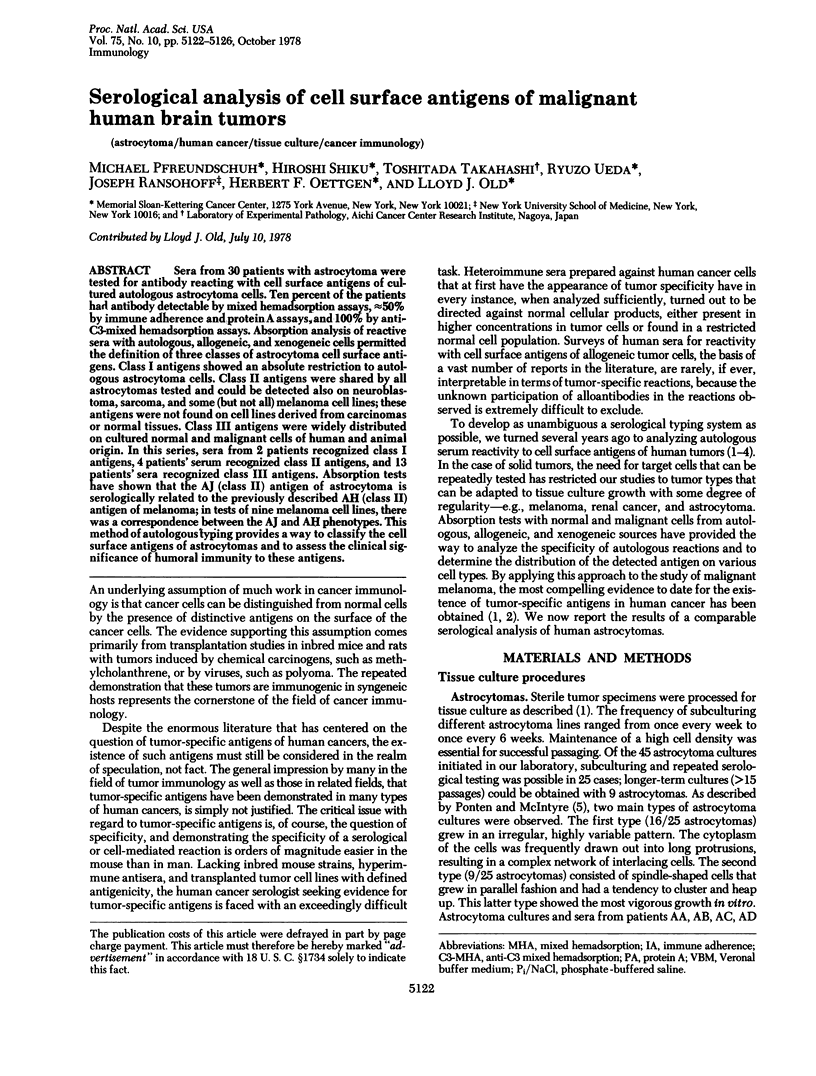
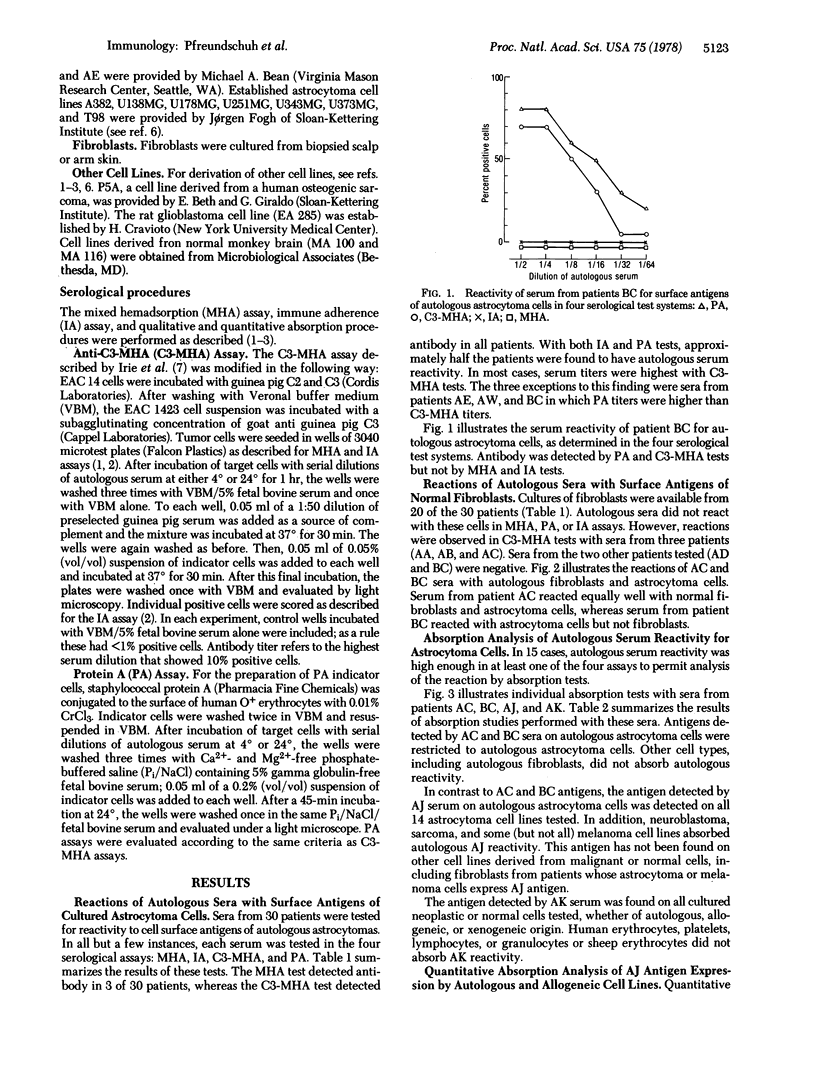
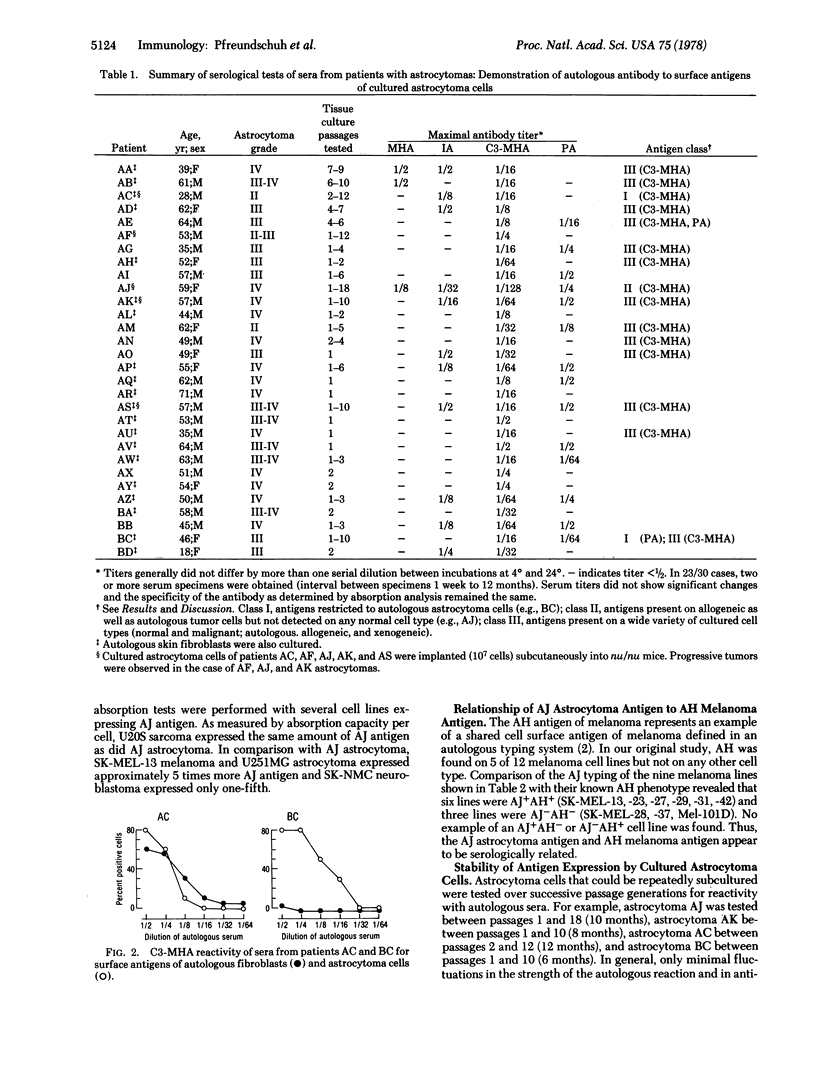
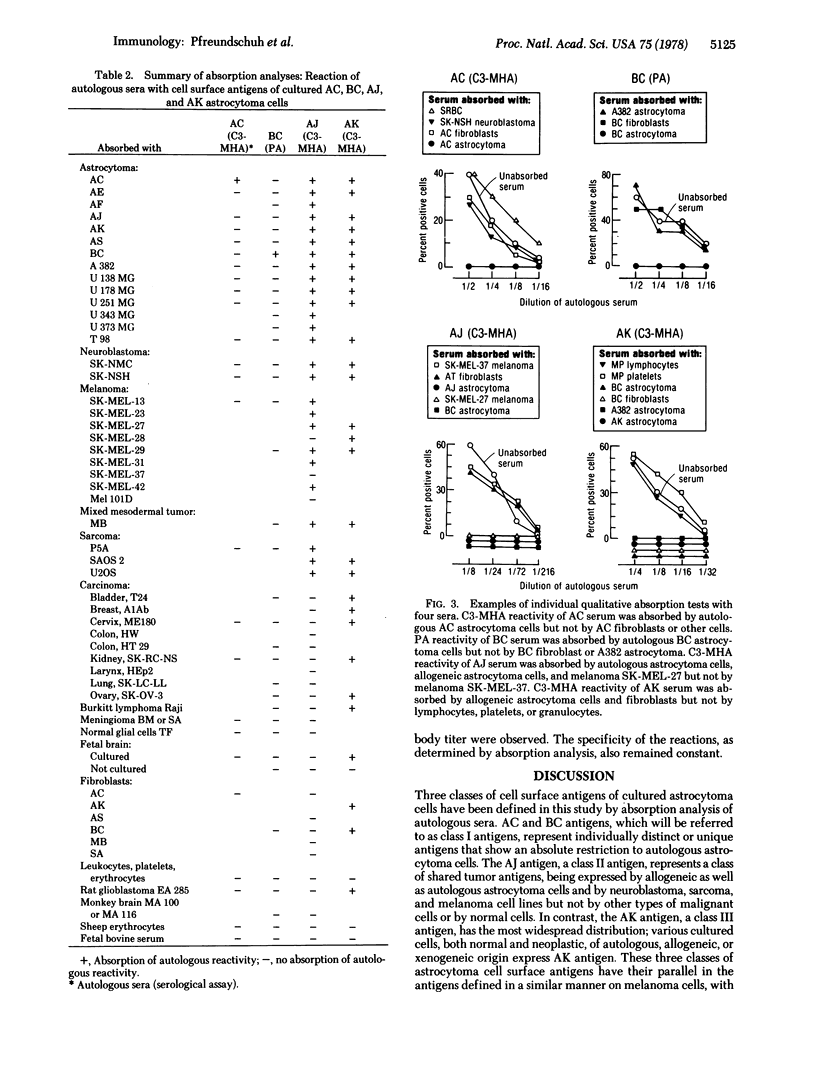
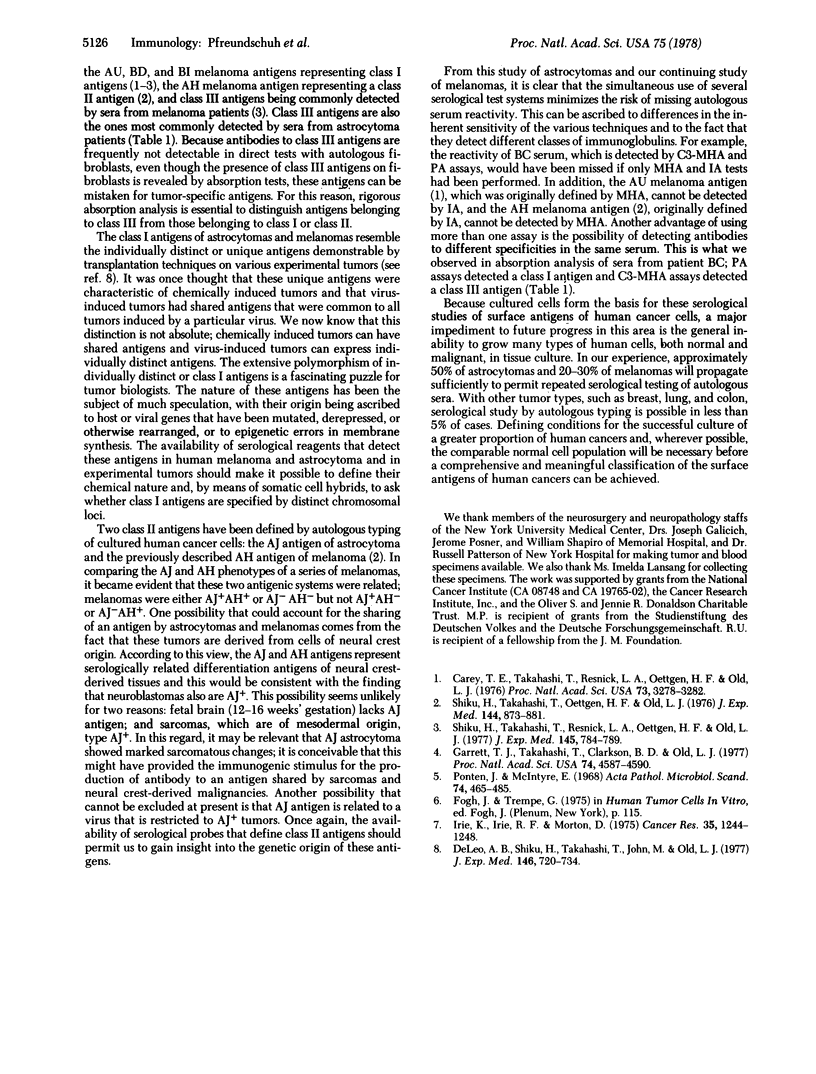
Selected References
These references are in PubMed. This may not be the complete list of references from this article.
- Carey T. E., Takahashi T., Resnick L. A., Oettgen H. F., Old L. J. Cell surface antigens of human malignant melanoma: mixed hemadsorption assays for humoral immunity to cultured autologous melanoma cells. Proc Natl Acad Sci U S A. 1976 Sep;73(9):3278–3282. doi: 10.1073/pnas.73.9.3278. [DOI] [PMC free article] [PubMed] [Google Scholar]
- DeLeo A. B., Shiku H., Takahashi T., John M., Old L. J. Cell surface antigens of chemically induced sarcomas of the mouse. I. Murine leukemia virus-related antigens and alloantigens on cultured fibroblasts and sarcoma cells: description of a unique antigen on BALB/c Meth A sarcoma. J Exp Med. 1977 Sep 1;146(3):720–734. doi: 10.1084/jem.146.3.720. [DOI] [PMC free article] [PubMed] [Google Scholar]
- Garrett T. J., Takahashi T., Clarkson B. D., Old L. J. Detection of antibody to autologous human leukemia cells by immune adherence assays. Proc Natl Acad Sci U S A. 1977 Oct;74(10):4587–4590. doi: 10.1073/pnas.74.10.4587. [DOI] [PMC free article] [PubMed] [Google Scholar]
- Irie K., Irie R. F., Morton D. L. Detection of antibody and complement complexed in vivo on membranes of human cancer cells by mixed hemadsorption techniques. Cancer Res. 1975 May;35(5):1244–1248. [PubMed] [Google Scholar]
- Pontén J., Macintyre E. H. Long term culture of normal and neoplastic human glia. Acta Pathol Microbiol Scand. 1968;74(4):465–486. doi: 10.1111/j.1699-0463.1968.tb03502.x. [DOI] [PubMed] [Google Scholar]
- Shiku H., Takahashi T., Oettgen H. F. Cell surface antigens of human malignant melanoma. II. Serological typing with immune adherence assays and definition of two new surface antigens. J Exp Med. 1976 Oct 1;144(4):873–881. doi: 10.1084/jem.144.4.873. [DOI] [PMC free article] [PubMed] [Google Scholar]
- Shiku H., Takahashi T., Resnick L. A., Oettgen H. F., Old L. J. Cell surface antigens of human malignant melanoma. III. Recognition of autoantibodies with unusual characteristics. J Exp Med. 1977 Mar 1;145(3):784–789. doi: 10.1084/jem.145.3.784. [DOI] [PMC free article] [PubMed] [Google Scholar]


